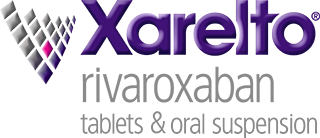Coming soon for patients taking XARELTO® (rivaroxaban): Janssen CarePath for XARELTO® and Janssen Select will transition to XARELTO withMe. We are simplifying access to our patient support in one location with a new name and look. Savings card and coverage gap benefits will not change.
What is AFib?
AFib is the most common type of irregular heartbeat. It occurs when the upper and lower chambers of the heart don’t work together like they should to pump blood through your heart. This can feel like your heart is fluttering or racing. However, it’s important to note that many people with AFib often feel no symptoms at all.
Understanding AFib could help lower your risk for stroke
People with AFib have an increased risk for stroke because the upper and lower chambers of the heart beat out of sync, and as a result:
-
Blood can pool and form a clot inside the heart. The blood clot can then be pumped out and travel through the arteries that supply blood to the brain.
-
Once lodged in the brain, the blood clot cuts off blood flow and oxygen, causing a stroke, which can be life-threatening.
AFib treatments vs medicines to reduce stroke risk
When you have AFib, there are two goals for managing your condition. One goal is to return your heart rate and rhythm to normal. This can be done through certain medicines or procedures that address your irregular heartbeat. While important, these treatments only address your irregular heartbeat.
Reducing your stroke risk is the other goal. This is why your healthcare professional may prescribe a blood thinner to help reduce your underlying risk for blood clots that can cause a life-threatening stroke.
What’s next?
Read Learning About XARELTO® for more information about how XARELTO® helps reduce your AFib-related stroke risk, along with steps for how to take it and what to do if you miss a dose.


